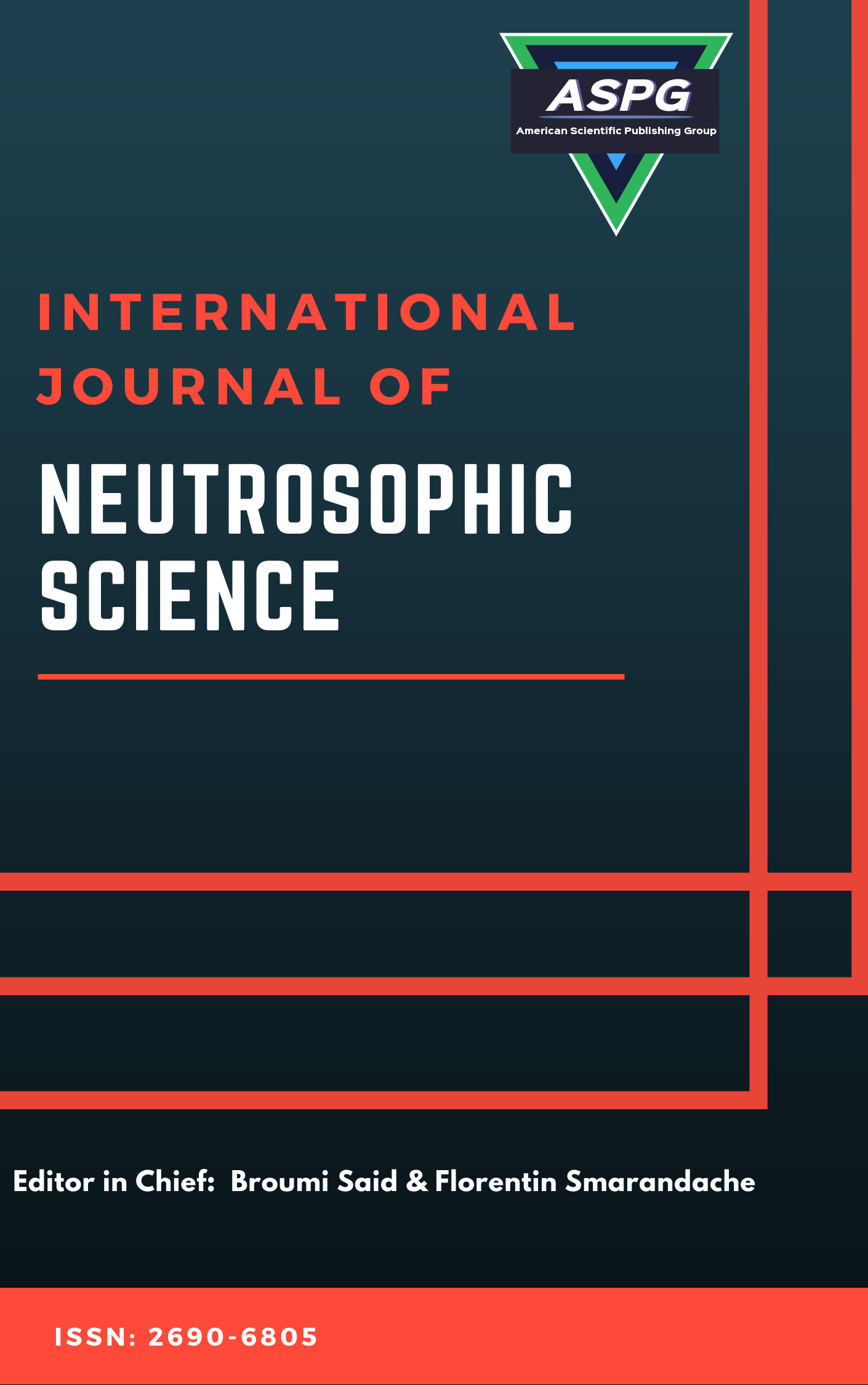

Volume 26 , Issue 4 , PP: 09-20, 2025 | Cite this article as | XML | Html | PDF | Full Length Article
Ghazwa F. Abd 1 *
Doi: https://doi.org/10.54216/IJNS.260402
Starting from semi-explicit perturbed bilinear time varying neutrosophic differential – algebraic equations (PBTVDAs). We develop a method for the stabilization of this controlled bilinear time varying neutrosophic differential – algebraic equations and prove that the controlled perturbed system can be stabilized by putting specific conditions on the proposed control. This method transfers the system to standard canonical form and uses the exponential stability concept. Therefore, the stabilization of this system is achieved finally; we present numerical results for the battery model, which confirm the theoretical results.
Bilinear , Neutrosophic equation , Differential equation , Algebraic equation , Exponential stability
[1] F. Soltanian, M. Dehghan, and S.-M. Karbassi, “Solution of the differential algebraic equations via homotopy perturbation method and their engineering applications,” Int. J. Comput. Math., vol. 87, no. 9, pp. 1950–1974, 2010.
[2] M. Günther and Y. Wagner, “Index concepts for linear mixed systems of differential-algebraic and hyperbolic-type equations,” SIAM J. Sci. Comput., vol. 22, no. 5, pp. 1610–1629, 2001.
[3] G. K. Edessa, “Existence and uniqueness solution of the model of enzyme kinetics in the sense of Caputo–Fabrizio fractional derivative,” Int. J. Differ. Equations, vol. 2022, no. 1, p. 1345919, 2022.
[4] O. A. Akinfenwa, S. A. Okunuga, and R. I. Abdulganiy, “Higher order extended block hybrid second derivatives backward differentiation formula for solving DAE of index 1, 2, and 3,” 2022.
[5] S. H. Salih, N. Al-Saidi, and R. A. Zboon, “A reliable numerical algorithm for stabilizing of the 2-dimensional logistic hyperchaotic trajectory,” Al-Mustansiriyah J. Sci., vol. 33, no. 1, pp. 51–56, 2022.
[6] M. Golchian, M. Gachpazan, and S. H. Tabasi, “A new approach for computing the exact solutions of DAEs in generalized Hessenberg forms,” Int. J. Nonlinear Anal. Appl., vol. 11, no. 1, pp. 199–206, 2020.
[7] G. F. Abd, “On Stabilizability of Nonbilinear Perturbed Descriptor Systems,” Int. J. Differ. Equations, vol. 2023, no. 1, p. 5561224, 2023.
[8] M. Touahria and N. Bensalem, “Stabilization of bilinear switching control systems by a mode-dependent average dwell time strategy,” Math. Mech. Complex Syst., vol. 9, no. 2, pp. 107–126, 2021.
[9] F. Magri, “Variational formulation for every linear equation,” Int. J. Eng. Sci., vol. 12, no. 6, pp. 537–549, 1974.
[10] E. H. Zerrik and A. A. Aadi, “On the stabilization for a class of distributed bilinear systems,” in Third Int. Conf. Math. Sci. (ICMS 2019), 2019, vol. 2183, no. 1, p. 100006.
[11] I. Bhogaraju, M. Farasat, M. Malisoff, and M. Krstic, “Sequential predictors for delay-compensating feedback stabilization of bilinear systems with uncertainties,” Syst. Control Lett., vol. 152, p. 104933, 2021.
[12] O. Angtuncio Hernández and G. Uribe Bravo, “Dini derivatives and regularity for exchangeable increment processes,” Trans. Amer. Math. Soc., Ser. B, vol. 7, no. 2, pp. 24–45, 2020.
[13] B. Benhammouda, “The Differential Transform Method as an Effective Tool to Solve Implicit Hessenberg Index‐3 Differential‐Algebraic Equations,” J. Math., vol. 2023, no. 1, p. 3620870, 2023.
[14] K. Ammari and M. Ouzahra, “Feedback stabilization for a bilinear control system under weak observability inequalities,” Automatica, vol. 113, p. 108821, 2020.
[15] B. I. Akinnukawe, O. A. Akinfenwa, and S. A. Okunuga, “Hybrid block algorithm for solving differential-algebraic equations with Hessenberg index 3,” 2019.
[16] G. F. Abd, “Functional Approach for Solving Reduced Order of Index‐Four Hessenberg Differential‐Algebraic Control System,” J. Math., vol. 2022, no. 1, p. 9621026, 2022.
[17] C. W. Gear and L. R. Petzold, “ODE methods for the solution of differential/algebraic systems,” SIAM J. Numer. Anal., vol. 21, no. 4, pp. 716–728, 1984.
[18] F. Amato, R. Ambrosino, M. Ariola, C. Cosentino, and G. De Tommasi, Finite-time Stability and Control, vol. 453. Springer, 2014.
[19] B. Zhou, “Finite-time stability analysis and stabilization by bounded linear time-varying feedback,” Automatica, vol. 121, p. 109191, 2020.
[20] T. Berger and A. Ilchmann, “On stability of time-varying linear differential-algebraic equations,” Int. J. Control, vol. 86, no. 6, pp. 1060–1076, 2013.
[21] T. Berger and A. Ilchmann, “On the standard canonical form of time-varying linear DAEs,” Quart. Appl. Math., vol. 71, no. 1, pp. 69–87, 2013.
[22] S. Yahyaoui and M. Ouzahra, “Quadratic optimal control and feedback stabilization of bilinear systems,” Optimal Control Appl. Methods, vol. 42, no. 4, pp. 878–890, 2021.
[23] M. Sogore and C. Jammazi, “On the global finite-time stabilization of bilinear systems by homogeneous feedback laws. Applications to some PDEs,” J. Math. Anal. Appl., vol. 486, no. 2, p. 123815, 2020.
[24] G. F. Abd and R. Ali, “Parametrization approach for solving index-4 linear differential-algebraic control systems,” Int. J. Math. Comput. Sci., vol. 17, no. 2, pp. 815–825, 2022.
[25] N. N. Hasan, “Analytic Approach for Solving System of Fractional Differential Equations,” Al-Mustansiriyah J. Sci., vol. 32, no. 1, 2021.